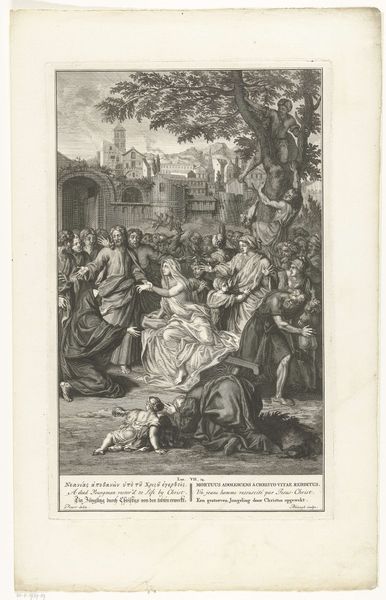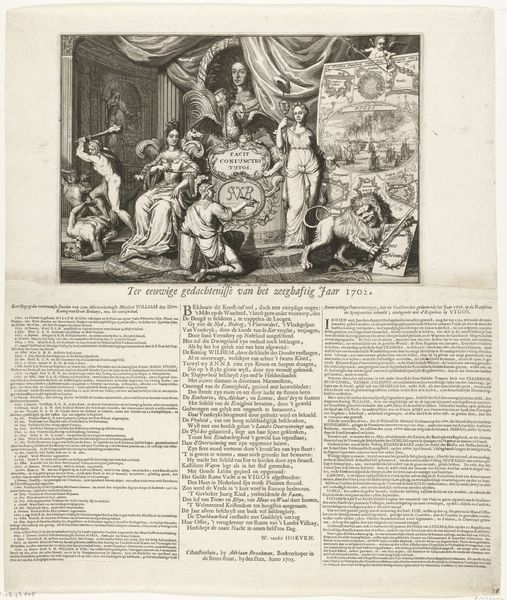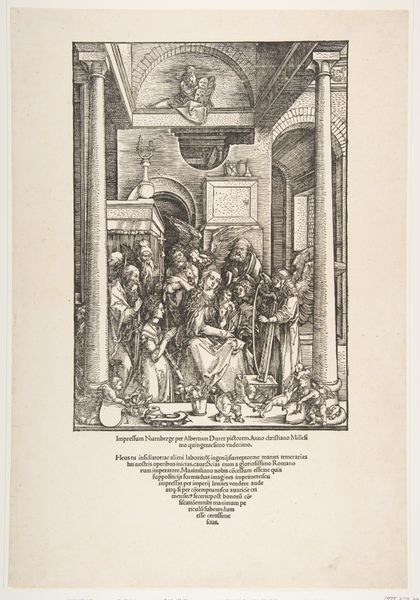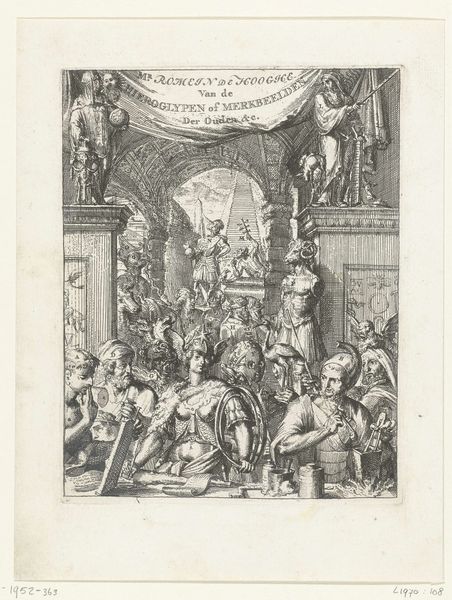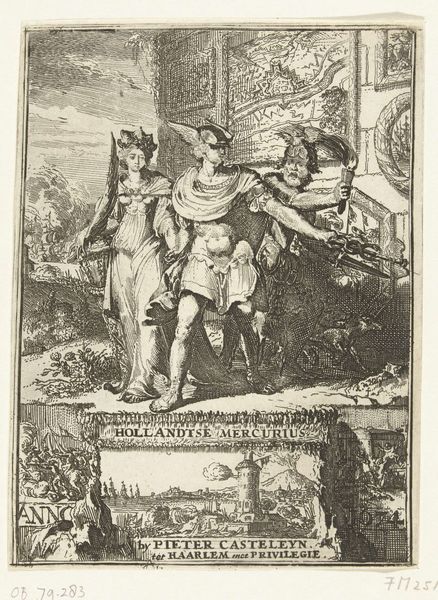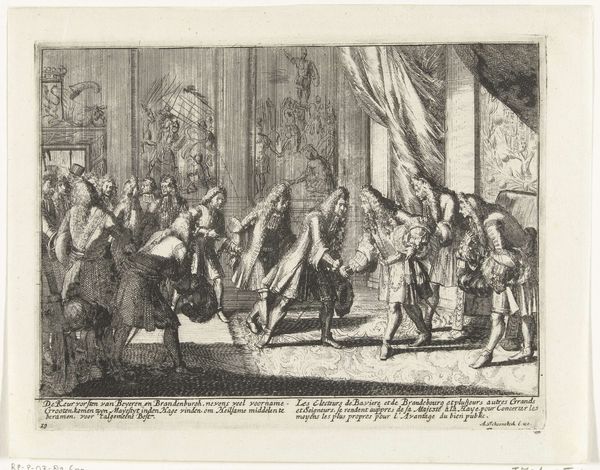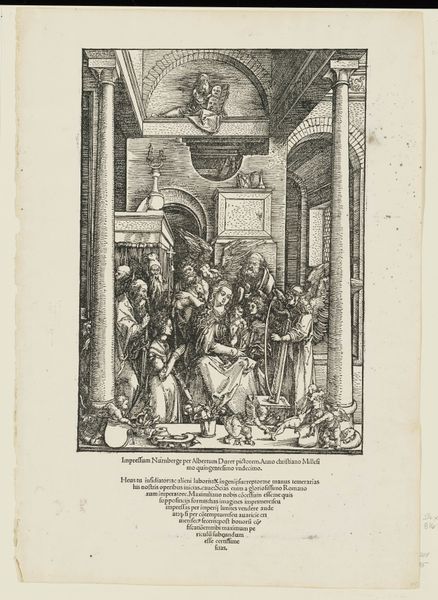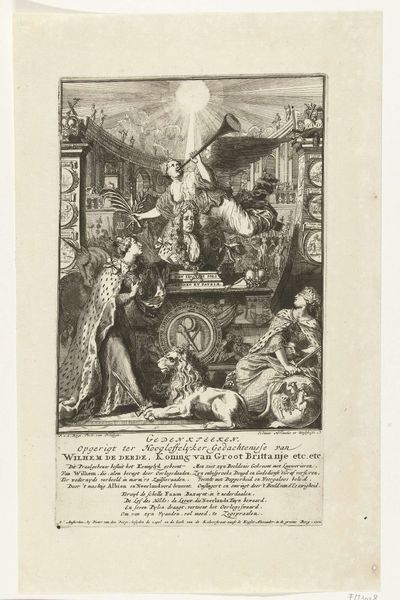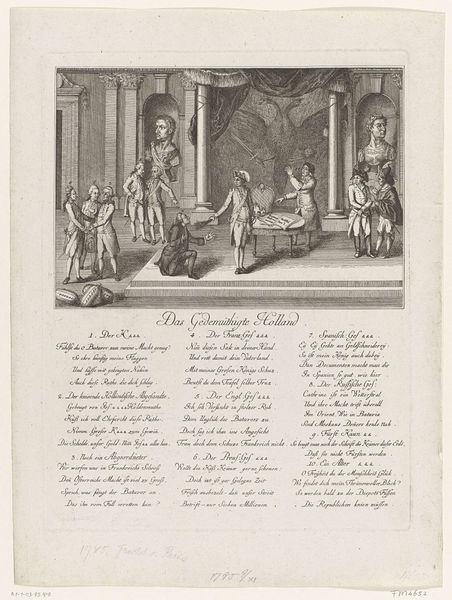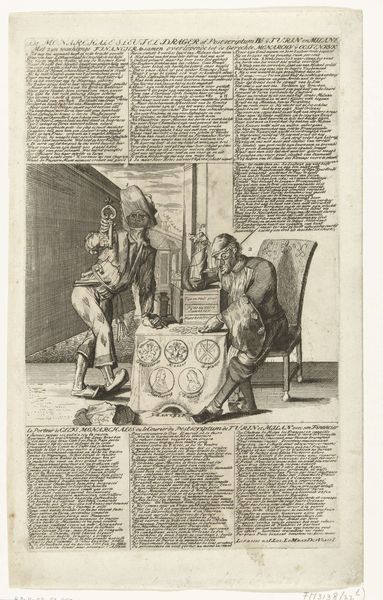
graphic-art, print, engraving
#
graphic-art
#
baroque
#
pen drawing
#
mechanical pen drawing
# print
#
caricature
#
old engraving style
#
history-painting
#
engraving
Dimensions: height 347 mm, width 240 mm
Copyright: Rijks Museum: Open Domain
Editor: This is "Spotprent op de omgekochte markgraaf van Baden-Baden," an engraving from 1707 by an anonymous artist, held at the Rijksmuseum. It feels incredibly detailed, and almost like a stage play unfolding, but there is definitely a satirical undertone. What can you tell me about it? Curator: This print offers a fascinating window into the political climate of the early 18th century. Caricatures like this were powerful tools to sway public opinion, functioning almost like political cartoons do today. The scene is designed to expose the Markgrave, accusing him of being bribed, a puppet dancing for foreign powers while his people suffer. Editor: So it's commentary on power and corruption, dressed as entertainment? How was this received? Curator: Precisely. The broad distribution of prints such as this suggests a public sphere deeply engaged with, and critical of, its leadership. The imagery would resonate with popular anxieties about foreign influence and the abuse of power, fostering a sense of shared outrage or discontent. Notice how carefully constructed the composition is - almost like a propaganda poster today. The figure in the lower section seems in distress. Editor: The text at the bottom also hints at financial woes, and the burden placed on citizens. So, art became a vessel to carry that message. Curator: Absolutely, and the medium matters too. Printmaking made this accessible to a broader audience, turning viewers into active participants in the debate. To go further, do you think the anonymity of the piece adds more power? Editor: Definitely. By being anonymous, it is as if everyone agrees, it could be anyone denouncing that behavior! I will now look at engravings with completely new eyes. Curator: Indeed! Analyzing the context and distribution of satirical prints enriches our comprehension of the social and political forces shaping artistic expression and public discourse in that era. It reveals the museum not merely as a place for aesthetic experience, but also of engagement with ideas about socio-political transformation.
Comments
No comments
Be the first to comment and join the conversation on the ultimate creative platform.
